Nếu bạn có thắc mắc hoặc gợi ý, vui lòng để lại tin nhắn cho chúng tôi, chúng tôi sẽ trả lời bạn ngay khi có thể!
liên hệ chúng tôi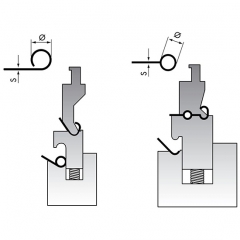
Ưu điểm Sản xuất trong hai hoặc ba hành trình Giảm dấu vết thông qua thiết bị giữ lò xo Các bộ phận hoạt động được làm cứng Độ lặp lại cao thông qua thước đo phía sau tích hợp Kiểm tra và điều chỉnh chức năng thông qua các lần uốn thử - với các tờ mẫu của bạn Thích hợp cho Độ dày vật liệu tối thiểu lên tới 4,0 mm bên trong Ø: 2,5 mm x độ dày vật liệu đối với thép và nhôm 3,0 mm x độ dày vật liệu đối với thép không gỉ
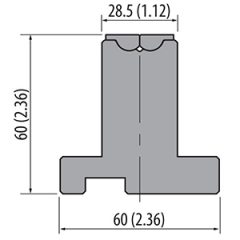
Bấm phanh rolla-v khuôn không bị trầy xước, tốt nhất nên đặt màng lên bề mặt phôi khi uốn. và chúng tôi sẽ giới thiệu kích thước khuôn cuộn-v phù hợp cho bạn tùy theo tấm bạn uốn.

Khuôn có thể điều chỉnh kiểu Shim Khuôn dưới có thể điều chỉnh có thể được coi là một trong những phần bổ sung linh hoạt nhất cho phanh báo chí. Với loại dao này có thể bố trí lỗ từ 6.35mm đến 381mm. Miếng đệm được cung cấp để tạo ra lỗ mở cần thiết. Miếng đệm có rãnh cho phép dễ dàng tháo ra để thay đổi lỗ khuôn. Khi không sử dụng, các miếng đệm được đặt ở các cạnh của khối khuôn. Những khuôn này có thể được trang bị theo chiều dài chắc chắn hoặc được cắt để xử lý dễ dàng hơn.
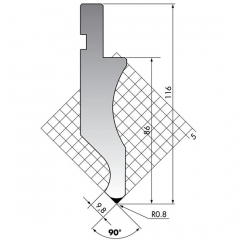
Kích thước lưỡi thẳng: 835*146*26mm, 90 độ. vật liệu là 42CrMo4, độ cứng là HRC47+/-3
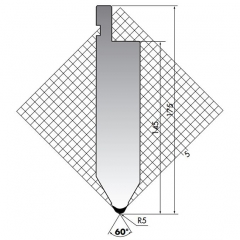
Kích thước lưỡi thẳng: 835*175*40mm, 60 độ. vật liệu là 42CrMo4, độ cứng là HRC47+/-3

Kích thước lưỡi thẳng: 835*146*26mm, 90 độ. vật liệu là 42CrMo4, độ cứng là HRC47+/-3
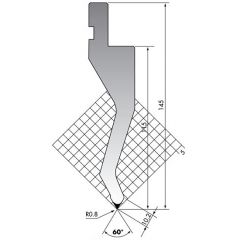
Kích thước lưỡi thẳng: 835*145*32mm, 60 độ. vật liệu là 42CrMo4, độ cứng là HRC47+/-3
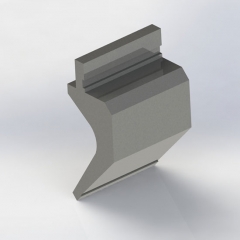
Kích thước cú đấm cổ ngỗng: 835 * 197 * 92mm, 88 độ. vật liệu là 42CrMo4, độ cứng là HRC47+/-3. và cao 197mm, rộng 92mm. có thể được thực hiện theo yêu cầu của khách hàng.
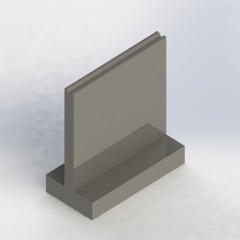
Kích thước khuôn TV: 835 * 120 * 60mm, V12,30 độ. vật liệu là 42CrMo4, độ cứng là HRC52-58. và V6,V8,V10,V16,V20,V25 có thể được thực hiện theo yêu cầu của khách hàng.
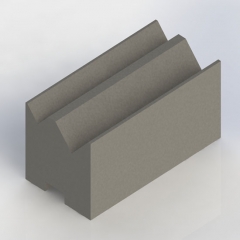
Khuôn 2V tự định tâm, kích thước là 835 * 46 * 50mm, 88 độ, trọng lượng là 17kg. Và chúng ta có thể tạo V5-V9, V8-V12, V12-V20, V16-V25 và các lỗ chữ V khác theo độ dày uốn.
What is the best material for press brake tooling?
In the field of sheet metal fabrication, the material selection of press brake tools directly determines its wear resistance, service life, and forming accuracy. To ensure production efficiency and product quality, it is especially important to choose tooling materials scientifically. However, with so many material options available on the market, customers are often confused when making a decision. So, how can one choose the "best" tooling material? This article will explore the topic from four key perspectives.
Based on Sheet Material Type
Different sheet materials require different tooling materials. The most commonly used press brake Moulds materials on the market include 42CrMo, T8/T10, H13, and SKD11/D2. Among them, high-strength and tough alloy steels like 42CrMo are sufficient for most general bending tasks. However, for materials such as stainless steel, which have higher strength and springback, harder and more wear-resistant tooling materials like SKD11 or H13 are more suitable.
Based on production volume and usage frequency
For long-running production lines or high-frequency operations, it's wise to use more wear-resistant materials like H13 or SKD11. While these come at a higher upfront cost, they significantly reduce downtime and tooling replacement. For short runs or occasional use, 42CrMo offers a great balance of performance and affordability.
Based on precision requirements
High-precision sheet metal parts often require higher hardness and stability from the tooling. In such cases, it is recommended to use high-hardness materials like SKD11 to prevent deformation and maintain consistent bending angles over time. Tooling with lower hardness is more likely to wear out or deform with prolonged use, which can negatively impact product accuracy.
Based on Cost
In general, high-quality tooling materials tend to be more expensive, but they offer a longer service life and require less maintenance. In the long run, despite the higher initial investment, the overall cost of use is actually lower. For customers who prioritize efficiency and stability, choosing high-grade materials is a wise investment.
In conclusion, there is no single standard answer when it comes to selecting press brake tooling materials. The right choice should be based on a comprehensive evaluation of material type, production goals, quality requirements, and budget.
At Golin, we are committed to using high-quality materials such as 42CrMo and SKD11, combined with advanced heat treatment processes to ensure our tools are both strong and durable. We also offer customized material and hardness options tailored to our customers' specific bending needs.If you have any further questions or would like to learn more, feel free to contact us anytime!
 Trực tuyến
Trực tuyến 0555-6768298
0555-6768298 0555-6769126
0555-6769126 sales2@cngolin.cn
sales2@cngolin.cn +86 18251802252
+86 18251802252